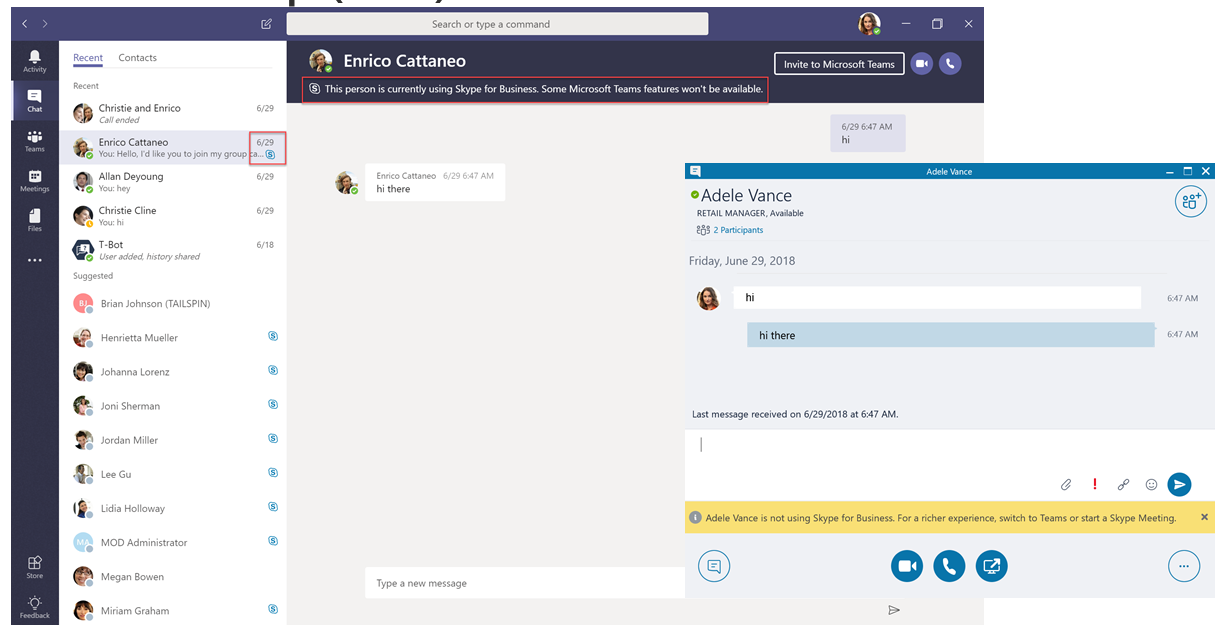Hello CiarraD,
- Skype For Business Doesn't Open
- Skype For Business Mac App
- Can't Open Skype For Business
- My Skype Won't Open
- Mac Skype For Business App Won 27t Open Source
- Mac Skype For Business App Won 27t Opening
- Skype For Business Won't Run
Windows and Skype for Business application If you're an external guest, you can join UBS meetings by selecting Use Skype For Business Web App. You won't be able to join UBS meetings using the standard Lync and Skype for Business desktop applications if you're outside the UBS network. Linux and Chromebook support. I have tried to connect to a Skype for Business meeting using the app on a Mac but it won't let me click Join as guest. The button clicks, but nothing ever happens.
In the menu bar, go to the Apple icon System Preferences. The System Preferences window opens. Click Accessibility to open the Accessibility pane. In the System section, click Speech. While in a peer-to-peer session between a Windows Skype for Business client and a Mac Skype for Business client, and sharing is started by the Mac Skype for Business client, the Windows Skype for Business client will not be able to see the Mac user's desktop if VBSS is disabled in the environment.

Thanks for using Apple Support Communities.
Skype For Business Doesn't Open
Please follow the steps below to ensure you have notifications configured correctly for the Skype app.
If you're not receiving notifications for a specific app, try these steps:

- Verify that the app supports notifications.
- After installing an app or restoring a backup to a different iOS device, open the app to begin receiving notifications. If the app requires entering or logging in to an account, you will need to do this before receiving notifications.
- Check Settings > Notification Center to ensure that the app is configured for notifications. If notifications do not appear in the Notification Center, verify that the Notification Center setting for the app is enabled.

Skype For Business Mac App
Take care,
Alex H.
Aug 22, 2014 11:04 AM
Microsoft has confirmed that some versions of its Skype for Business app are prone to crashes, and the issue won't be easy to resolve.

The Redmond software outfit says that it has heard from users who say the 32-bit version of Skype tends to crash when run for an extended amount of time or when sharing screens, and it has narrowed down the cause to simple math.
Specifically, the memory limitations of 32-bit Windows don't work very well with Skype's healthy appetite for memory. The app tends to chew up more memory space than the 32-bit version of Windows (limited to 4GB of total memory and 2GB per app) is able to allocate.
According to Microsoft engineer Kenn Guilstorf today, when multiple windows are open in Skype, particularly with high resolution monitors, that 2GB of RAM can be used up quickly and will lead to a crash.
What the @#$%&!? Microsoft bans nudity, swearing in Skype, emails, Office 365 docs
Can't Open Skype For Business
READ MOREMy Skype Won't Open
'When Skype for Business 2015 or 2016 is used for application sharing, it needs to be aware of every pixel on every monitor because the end-user can move the window for the shared application to any monitor at any time,' Guilstorf explains.
'S4B keeps track of this data by creating a buffer that is large enough to accommodate the color of every pixel on every monitor. To do this, it adds up the horizontal resolution of all of the monitors and multiplies that total by the largest vertical resolution of any of the monitors.'
Because the problem is due to the 32-bit architecture, fixes aren't going to be easy to come by. The most practical solution is to upgrade the machine to a 64-bit version of Windows, which is capable of using larger amounts of memory. In the case of this bug, crashes tend to happen on PCs powering high def (2k/4k/UHD) monitors that should already be capable of running 64-bit versions of Windows.
Mac Skype For Business App Won 27t Open Source
For those that (for one reason or another) can't migrate to a 64-bit version of Windows, Guilstorf recommends switching modes from application sharing to desktop sharing in order to reduce Skype's footprint.
'Desktop sharing basically bifurcates the display device stream which requires a much smaller buffer and shouldn’t cause as many memory restriction issues,' Guilstorf explains.
Meanwhile, Microsoft would love you to migrate to Teams. ®
Mac Skype For Business App Won 27t Opening
